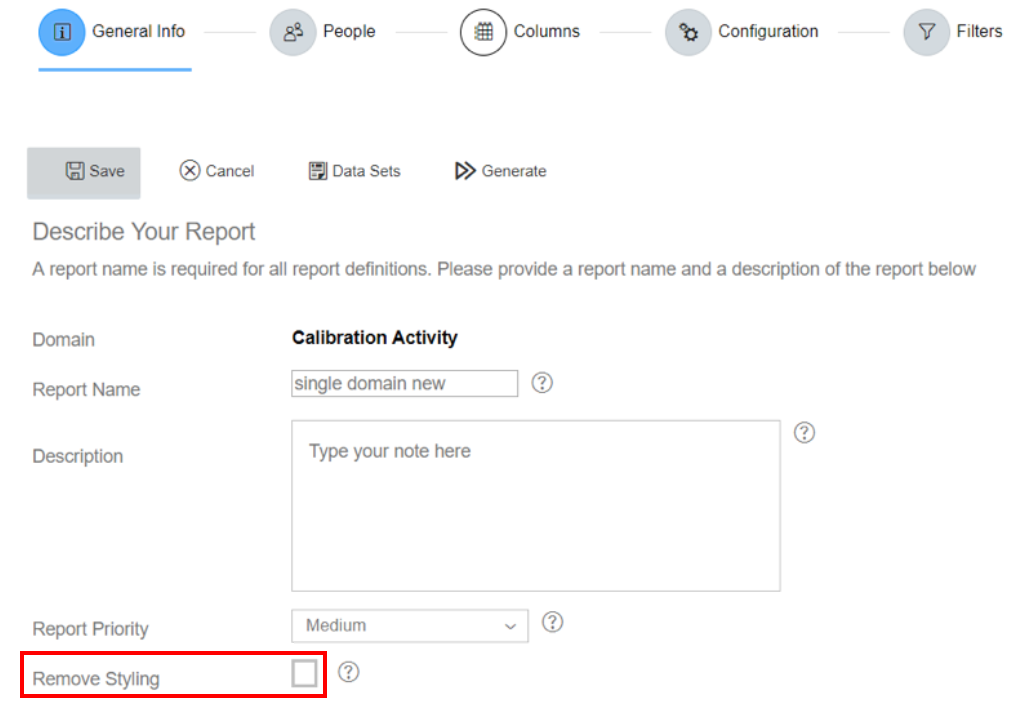Q3 2018 : SuccessFactors Analytics and Reporting - Quarterly Review
01 Sep 2018The Q3 2018 release certainly brings one of the more unusual updates around reporting and analytics in SuccessFactors. To begin with, SAP is releasing a set of updates around the report tool, known as BIRT (Business Intelligent and Reporting Tool), and considered by most SuccessFactors users as a legacy reporting tool. Alongside this, they are also applying some updates to Report Centre and setting up some important changes for the Q4 2018 release.
It is certainly quite unusual, so what’s going on?
BIRT
BIRT is an Open Source piece of software that allows users to build custom reports. It was largely superseded by SuccessFactors Report Centre, but some organisations have simply continued to use it as to do otherwise would be an expensive process of rebuilding and retesting all of their custom reports in a different tool. Some organisations also use it across multiple enterprise systems and so have a skilled team to develop a wide range of custom reports using this software.
In this release, SAP is updating the BIRT add-on solution from version 2.6 to 4.3.2. That’s updating an ailing June 2010 version to a version from February 2014. What I don’t quite understand is why they didn’t go all the way and switch to the latest version, 4.7.0 which was released in June 2017.
We do know that SAP is deploying this update to provide some features for clients that have been hitting issues around technical complexity limits. This update is also expected to provide significant performance improvements on more complicated reports. In particular, those where the ‘remove styling’ option is specified; see figure 1.
If you are still making use of BIRT, it is important that you test all of your reports with this update. The fact that it is such a big jump means that the risk of a compatibility issue occurring or a notable change in behaviour being applied is that much higher than a point release update. Of course, it would be well worth reviewing your reports in terms of options and performance as well.

Report Centre
Within this release, Report Centre, the SuccessFactors inbuilt reporting tool, receives only a handful of relatively minor updates. The good news is that they are all focussed on improving the user experience, and as a result, I expect they will add up to something a little more than they might on their own.
Filters
Report filters are now persistent across reporting sessions. Users of Report Centre who use just a subset of reports will find this useful as they won’t need to keep hunting for reports. However, for those users who just search for individual reports as they need them, they may need to be cautious of filters hanging over from previous sessions. I’d recommend a quick communication to your Report Centre users to highlight this change in behaviour.
Parameter Matching
As well as filters, SAP has also introduced a change to the parameter matching operators – the choices of how you match a data attribute against a parameter. Canvas reports now have access to a “contains” matching option. Rather than using “exact” or “starts with”, the “contains” filter allows for much quicker and easier application of appropriate match criteria where the matching term might be within a string rather than at the start or an exact match. This matching option is something that is particularly useful in systems like SuccessFactors Learning where you might use compound naming conventions to build up a name of an item using multiple identifying factors (e.g. {domain}-{audience}-{curriculum type}-{name}). Being able to specify those irrespective of where in the name the match comes has significant potential for simplifying some reports.
Fiori Revisions
To match to the ongoing Fiori revisions seen throughout the SuccessFactors suite, Report Centre is also receiving some theming and responsive layout updates which should help give users a more seamless experience, regardless of what device and platform they are accessing the reports from.
Housekeeping
SAP has made some administrative improvements to the handling of pages and for the removal of entire reports within the canvas (ad hoc) reporting area. This improvement will no doubt help administrators, and Report Centre users keep the organisation’s reports organised and relevant. Whether your organisation has just a few larger reports or a large volume of reports, this functionality update is going to be useful; if, and only if, you put the time in to do some housekeeping on your reports.
Another housekeeping related update is, in fact, a bug fix. Previously, when users tried to access a deleted report from an old link or access a link where the user lacks the correct permissions, a blank page was displayed. This was simply not helpful for the end user. In this update, SAP catches the error and displays an error advising the user of what has occurred. I can see this saving quite a few awkward e-mails and support tickets in the future.
New for Next Quarter
Interestingly, SAP is also giving notice with this Q3 release for some Q4 changes. Of course, that only ever means that customers have some preparatory work to do.
Deprecation of Imported Ad Hoc Reports
Currently, you can build queries as external reports and import them into a Canvas Report (“Report - Table”). However, this has always felt like a bit of a legacy hack, and the performance on the larger reports have been dire. However, in fairness, the system was never really designed for this, and the fact that there was an option to do this at all should be viewed as a positive; but there comes a time when those sorts of hacks have to be left behind.
SAP has decided to deprecate it in the next release (Q4 2018). As a result, customers who are still using this functionality should replace any queries built in “Ad Hoc Reports” with queries built in Canvas Reports directly. Hopefully, you won’t have too many, but if you have any at all, you should make a start on replacing them as soon as possible.
Login Audit Period Restriction
The second piece of Q4 release news is what appears to me to be mainly a cost-saving exercise, with a hint of data security activity thrown in to make it more palatable. From the next release, login audit periods will be restricted to the last 90 days. Any customers wanting to report over longer periods need to keep periodic reports covering historic periods. The fact that customers can take and store periodic exports somewhat lends itself towards this being a cost-saving exercise around data storage and processing utilised by queries against such large datasets. At the same time, SAP may be pushing the onus back to the customer on handling data older than 90 days to gain some liberation of responsibility around operational considerations such as GDPR (the European General Data Protection Regulation). There’s simply not enough information from SAP about the reason for the change to know for sure.
Conclusion
This release is a disappointment for anyone looking for groundbreaking new functionality regarding SuccessFactors reporting and analytics. It’s a release where SAP has been dotting the I’s and crossing the T’s, but that’s not necessarily a bad thing and to my mind is a sign of the product’s maturity.
The handful of changes SAP have made have been focussed on ease of use and system performance. The update to BIRT was something of a surprise, but I suspect the seemingly smaller set of updates to some of the niggles in Report Centre will be welcomed by many SuccessFactors customers and in the end, may well end up having more impact.
I strongly suspect the Q4 release will be something similarly incremental and then in 2019, we’ll see a step change in analytics in general with SAP Analytics Cloud utilisation on the rise and the rapidly increasing adoption of machine learning. I imagine we’ll start to see more cross-module and even cross function reporting with more actionable insights being drawn from the ever-increasing volumes of ‘big data’ and predictive algorithms. If your organisation isn’t planning on making the most of the reporting opportunities that are on your doorstep, then you should be rethinking that plan because your competitors will be planning to take advantage of it.
 Scroll the menu to find all the places to visit
Scroll the menu to find all the places to visit


